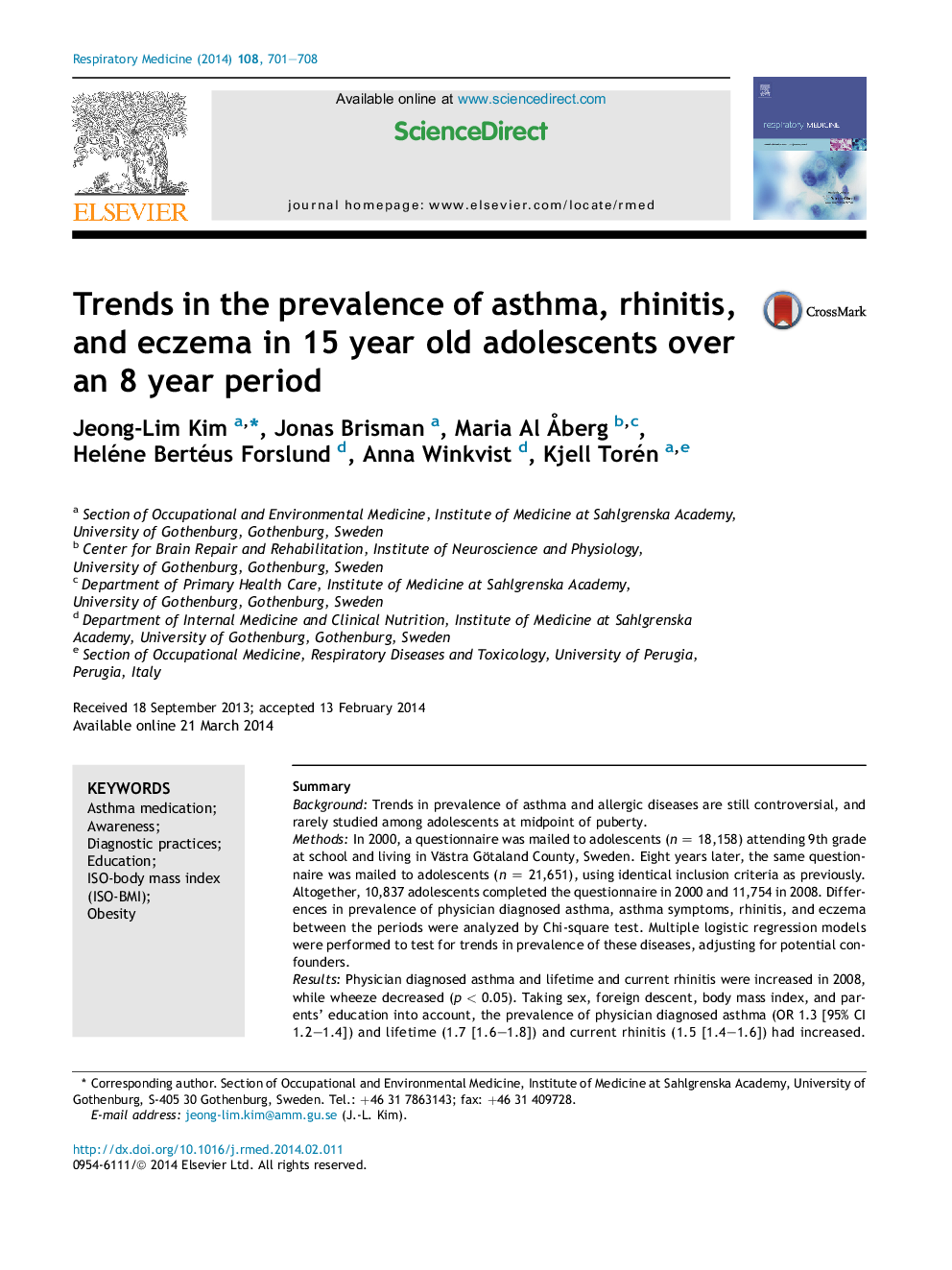| Article ID | Journal | Published Year | Pages | File Type |
|---|---|---|---|---|
| 4210274 | Respiratory Medicine | 2014 | 8 Pages |
SummaryBackgroundTrends in prevalence of asthma and allergic diseases are still controversial, and rarely studied among adolescents at midpoint of puberty.MethodsIn 2000, a questionnaire was mailed to adolescents (n = 18,158) attending 9th grade at school and living in Västra Götaland County, Sweden. Eight years later, the same questionnaire was mailed to adolescents (n = 21,651), using identical inclusion criteria as previously. Altogether, 10,837 adolescents completed the questionnaire in 2000 and 11,754 in 2008. Differences in prevalence of physician diagnosed asthma, asthma symptoms, rhinitis, and eczema between the periods were analyzed by Chi-square test. Multiple logistic regression models were performed to test for trends in prevalence of these diseases, adjusting for potential confounders.ResultsPhysician diagnosed asthma and lifetime and current rhinitis were increased in 2008, while wheeze decreased (p < 0.05). Taking sex, foreign descent, body mass index, and parents' education into account, the prevalence of physician diagnosed asthma (OR 1.3 [95% CI 1.2–1.4]) and lifetime (1.7 [1.6–1.8]) and current rhinitis (1.5 [1.4–1.6]) had increased. Eczema had decreased (0.9 [0.8–0.98]). These trends were consistent in boys and girls, but more prominent in those with obesity. In physician diagnosed asthmatics, there was no change in wheeze, asthma symptoms, or asthma medication.ConclusionsThe prevalence of physician diagnosed asthma has increased over the last decade, maybe due to combinations of changes in diagnostics and increased general awareness, rather than a real increase. Results showed an increase in rhinitis and a decrease in eczema. Obesity seems to have a modifying effect, which calls for further investigation.
